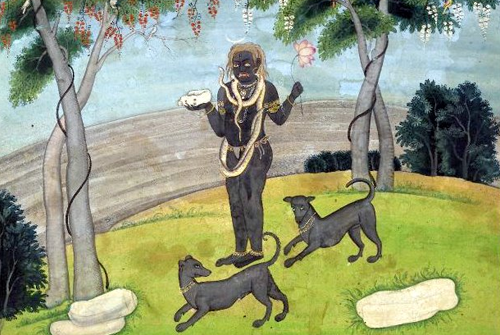
#InternationalDogDay Indian ancient texts have many interesting dog examples. Below: Dattatreya, ascetic, avatar, and one of the lords of Yoga, with his four dogs. 

In the Mahabharata, only a dog was the final companion of Yudhisthira in his final leg to heaven. He refused to enter heaven without the loyal dog, who later turned out to be Dharma himself, taking Yudhisthira's test of loyalty. 

• • •
Missing some Tweet in this thread? You can try to
force a refresh










